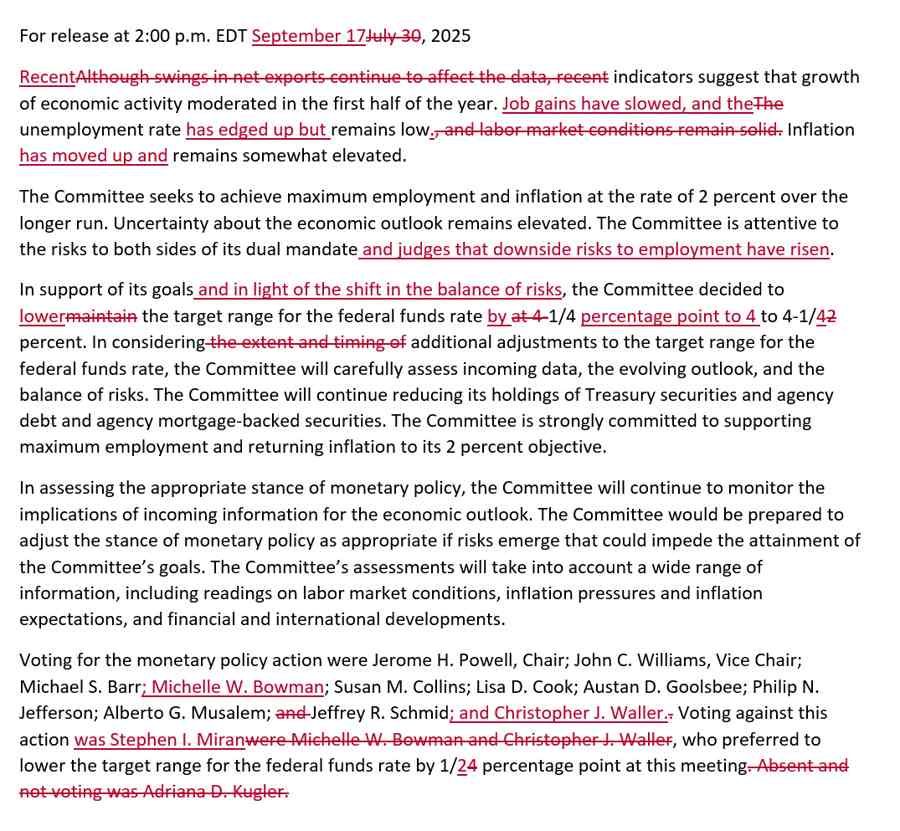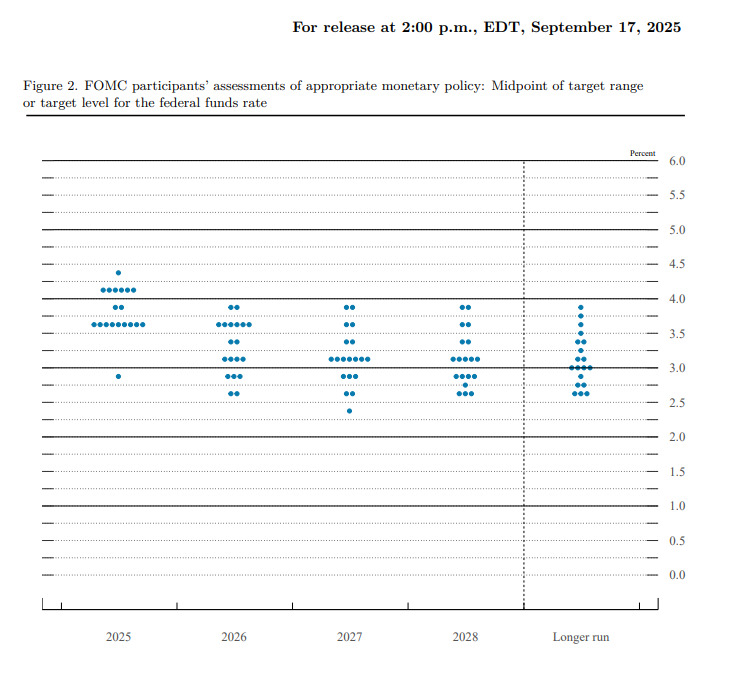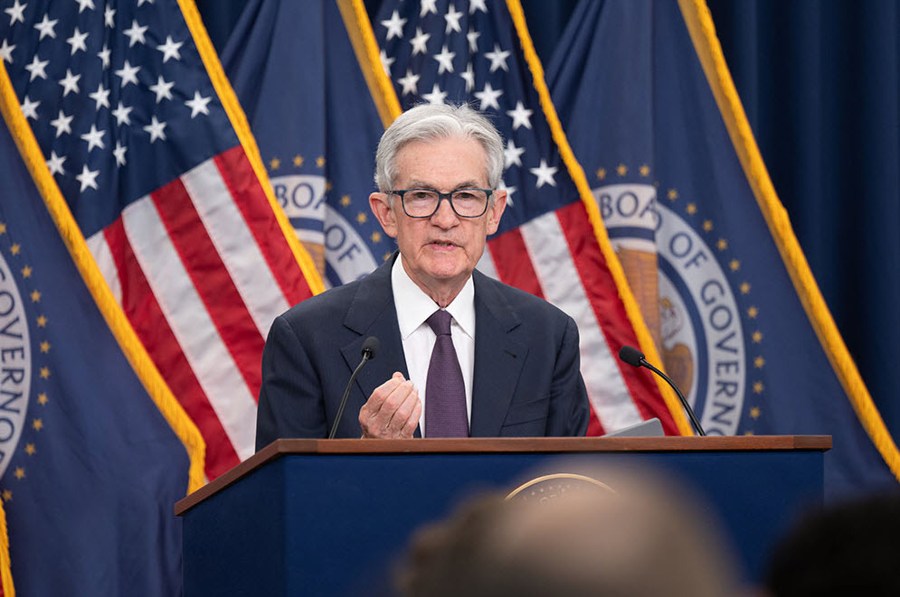Yesterday, ahead of the Fed decision, I wrote down all the things that were expected and all the potential surprises. Let's see what we got...
STATEMENT
The changes in the statement were as expected. The Fed acknowledged the weakening in the labour market and maintained the lines about elevated inflation and uncertainty. So, the only surprise here was the voting split. In fact, the expectations were for two or three members voting for a 50 bps cut (Miran, Waller, Bowman), instead we got just one (Miran). This was slightly hawkish.

DOT PLOT
The changes in the dot plot, on the other hand, were definitely more hawkish than the market pricing. The market was pricing 68 bps of easing by year-end (three cuts in 2025) and cumulatively 148 bps of easing by the end of 2026 (three more cuts in 2026). The Fed, instead, matched the market pricing for 2025 but projected just one more cut in 2026.
Moreover, if we look at the details, the three cuts in 2025 were reached by a narrow majority. In fact, 10 members projected two or more rate cuts in 2025 and 9 projected one or less. We had 1 member projecting a rate hike (likely Hammack), 6 members projecting no cuts, 2 members projecting one cut, 9 members projecting two cuts and 1 member projecting six cuts (Miran, of course).

PRESS CONFERENCE
This is where it's harder to get an objective view. If we take Powell's Jackson Hole speech as the baseline, he didn't really deviated much from that. He understandably placed more emphasis on the labour market given that we got two consecutive soft NFP reports but didn't sound that much concerned about the recent data saying that it's mostly because of immigration changes.
He also labelled the rate cut as a "risk management" action, which could mean that if the data were to strengthen in the next months, he might focus more on inflation and therefore we could get less than the two cuts projected yesterday.
Overall, I think he once again did a great job by balancing everything without leaning on either side, so that the economic data in the coming months will have the final say on their next moves.

SUMMARY
To sum up, I don't think yesterday's decision can be labelled as dovish at all. I'd say it was neutral to hawkish. It's just the recent weakening in the labour market data that forced the Fed to move towards neutral as a "risk management" action. This means that if the data were to improve in the next months, the Fed would start to sound more hawkish.



